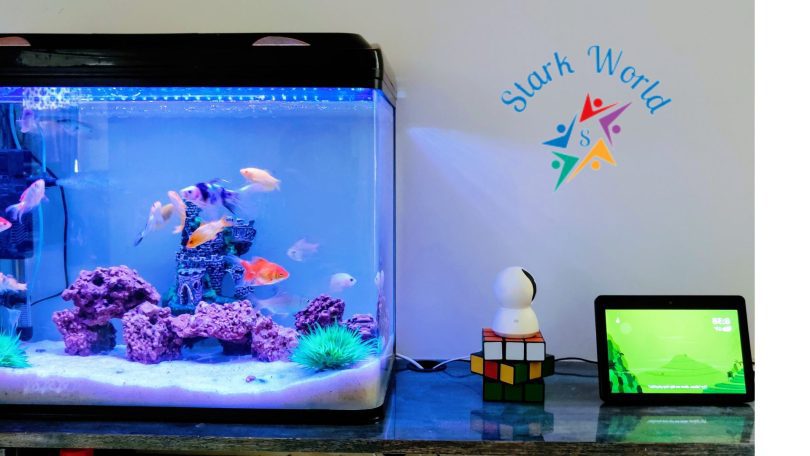Welcome, fellow aqua enthusiasts! Today we embark on an exciting journey of setting up a freshwater aquarium. Whether you’re a beginner or a seasoned hobbyist, this comprehensive guide aims to provide you with the information you need to establish your aquatic habitat successfully.
Introduction
Benefits of setting up a freshwater aquarium
Having a freshwater aquarium at home has numerous benefits. It’s not merely a decorative piece; it’s a living ecosystem that provides a sense of tranquility and peace. Observing the fish swim around in their serene environment has been found to reduce stress and improve mental well-being.
Additionally, maintaining an aquarium can be an educational experience, especially for children, teaching them about biology, ecology, and responsibility for other living beings.
Overview of the steps involved in setting up a freshwater aquarium
Setting up a freshwater aquarium involves careful planning and execution. The process can be divided into five main steps: Planning your Aquarium, Setting Up the Aquarium, Cycling Your Aquarium, Adding Fish and Plants, and Maintaining Your Aquarium. Each step is crucial to ensure the well-being of your aquatic inhabitants and the overall success of your aquarium.
Step 1: Planning Your Aquarium
Choosing the right location
The first step in planning your aquarium is selecting a suitable location. The area should be away from direct sunlight to prevent excessive algae growth and overheating. It should also be free from drafts and temperature fluctuations. Additionally, the surface needs to be level and sturdy enough to support the weight of the filled aquarium.
Determining the size of your aquarium
The size of your aquarium significantly impacts the health and happiness of your fish. Bigger tanks are generally more stable and easier to maintain, and they offer more swimming space for your aquatic pets. However, keep in mind that larger aquariums also require more commitment in terms of maintenance and cost.
Selecting the appropriate aquarium equipment
Choosing the right equipment is another critical aspect of planning your aquarium. This includes a filtration system, heater, lighting, and a thermometer. The choices you make will depend on the size of your tank and the needs of the fish species you wish to keep.
Step 2: Setting Up the Aquarium
Cleaning the aquarium
Before adding anything to your tank, it’s crucial to clean the aquarium with warm water to remove any dust or residues. Avoid using soap or detergents, as they can harm your future aquatic inhabitants.
Adding the substrate and decorations
Next, add a layer of gravel or sand at the bottom of your tank. This forms the substrate where beneficial bacteria will colonize. Afterward, you can decorate your aquarium with plants, rocks, and other structures to provide hiding spots for your fish and enhance the visual appeal of your setup.
Installing the filtration system
A filtration system is essential to maintaining the quality of the water in your aquarium. It removes waste, excess food, and harmful chemicals, providing a clean environment for your fish. Ensure the filter is properly installed and working before moving on to the next step.
Filling the aquarium with water
Once you’ve installed the filter, it’s time to fill your tank with water. Use a plate or bowl to disperse the flow and avoid disturbing the substrate. Don’t forget to add a water conditioner to neutralize the harmful chlorine and chloramines found in tap water.
Step 3: Cycling Your Aquarium
Understanding the nitrogen cycle
The nitrogen cycle is a biological process crucial to the health of your aquarium. It involves the conversion of harmful ammonia, produced by fish waste and uneaten food, into less harmful nitrates by beneficial bacteria. It is vital to establish this cycle before introducing any fish to the tank.
Adding beneficial bacteria
To initiate the nitrogen cycle, add some sources of beneficial bacteria to your tank. This could be in the form of a bacteria starter culture or material from an established aquarium. These bacteria will help kickstart the nitrogen cycle.
Testing water parameters
During the cycling process, regularly test your water parameters using an aquarium test kit. Monitor the levels of ammonia, nitrites, and nitrates to ensure the successful establishment of the nitrogen cycle. Only when the ammonia and nitrite levels drop to zero should you consider adding fish to your aquarium.
Step 4: Adding Fish and Plants
Choosing compatible fish species
When selecting fish for your aquarium, it’s important to choose species that coexist harmoniously. Take into consideration their temperaments, size, diet, and environmental needs. Some species might require specific water conditions, while others might not get along with certain types of fish.
Acclimating fish to the aquarium
Before introducing your fish to their new home, it’s essential to acclimate them to the water conditions. This process involves slowly mixing the water from your tank with the water in the fish bag to avoid shocking the fish with a sudden change in temperature or pH.
Introducing live plants
Live plants not only enhance the aesthetic appeal of your aquarium but also provide oxygen, absorb carbon dioxide, and offer hiding spots for your fish. They can also help control algae growth by consuming excess nutrients in the water.
Step 5: Maintaining Your Aquarium
Regular water testing and maintenance
Maintaining a healthy aquarium requires regular testing of the water parameters and timely adjustments when necessary. Keep an eye on the levels of ammonia, nitrites, nitrates, pH, and the temperature of your tank to ensure optimal conditions for your fish.
Cleaning the aquarium and changing the water
Clean your aquarium regularly to remove uneaten food, waste, and algae. A partial water change should also be performed every two weeks to maintain water quality. However, never replace all the water at once as this could disrupt the established nitrogen cycle.
Feeding and caring for your fish
Proper feeding is crucial for your fish’s health. Overfeeding can lead to obesity and water pollution, so it’s best to feed them in small amounts twice a day. Also, remember to observe your fish regularly for any signs of illness or stress and provide appropriate care and treatment when needed.
Conclusion
Congratulations! You have now completed the step-by-step guide on setting up your freshwater aquarium. By carefully planning, and executing each step, and maintaining a healthy environment, you have created a beautiful aquatic habitat for your fish to thrive in.







